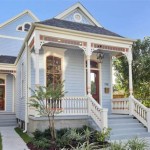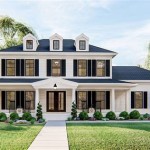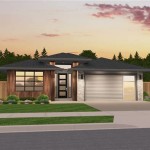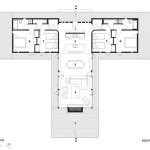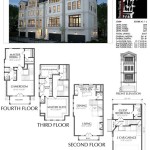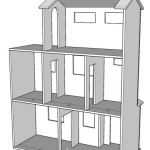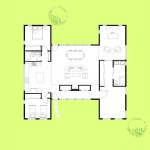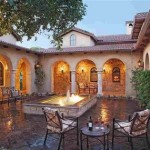Do-it-yourself (DIY) bird house plans provide detailed instructions for constructing birdhouses using readily available materials and tools. By following these plans, individuals can create a home for wild birds that offers protection from the elements, predators, and nesting sites.
Building a birdhouse can be a rewarding and fulfilling project, attracting a variety of avian visitors to your backyard or garden. With the right materials and plans, you can provide a comfortable nesting space for birds, while also enhancing the aesthetic appeal of your outdoor environment.
In this article, we will explore an array of DIY bird house plans, providing step-by-step instructions, tips, and additional resources to help you create a functional and attractive birdhouse for your feathered friends.
When planning and constructing a birdhouse, there are several key points to consider to ensure the well-being of your feathered tenants and the longevity of the structure:
- Choose the right location
- Select appropriate materials
- Provide proper drainage
- Create a safe entrance hole
- Add ventilation holes
- Consider the size and shape
- Protect from predators
- Maintain and clean regularly
By addressing these aspects during the planning and construction phases, you can create a birdhouse that provides a safe, comfortable, and inviting nesting environment for your avian visitors.
Choose the right location
Selecting the right location for your birdhouse is crucial to ensure the safety, comfort, and nesting success of your avian tenants.
- Height: Place the birdhouse at a height of 5-10 feet above the ground to protect it from predators and provide a clear flight path for birds.
- Direction: Position the entrance hole facing east or southeast to provide morning sunlight and protection from prevailing winds and rain.
- Surroundings: Choose a location with nearby trees or shrubs to offer birds cover and protection from predators, but avoid placing the birdhouse directly under dense foliage that may obstruct the entrance.
- Accessibility: Ensure the birdhouse is easily accessible for monitoring and cleaning, but not so close to human activity that it causes disturbance.
By carefully considering these factors when choosing the location for your birdhouse, you can create an ideal nesting environment that attracts birds and promotes their breeding success.
Select appropriate materials
The choice of materials for your DIY birdhouse is critical to its durability, longevity, and ability to provide a safe and comfortable nesting environment for birds.
Wood: Wood is a popular choice for birdhouses due to its natural insulation properties and ease of workability. Cedar and redwood are naturally rot-resistant and weather-resistant, making them excellent choices for outdoor use. Pressure-treated lumber is also an option, but ensure it is labeled for birdhouse construction to avoid exposing birds to harmful chemicals.
Plastic: Recycled plastic is a durable and weather-resistant material that is becoming increasingly popular for birdhouse construction. It is easy to clean and maintain, and it does not rot or warp like wood. However, plastic can be more difficult to work with and may not provide the same level of insulation as wood.
Metal: Metal is not commonly used for birdhouses due to its tendency to heat up in the sun and cool down rapidly at night, which can be harmful to nestlings. However, galvanized metal or aluminum can be used if properly insulated with wood or other materials.
Other materials: Other materials such as gourds, bamboo, and clay can also be used to make birdhouses. These materials offer unique aesthetic qualities and may be suitable for certain bird species. However, they may require additional weatherproofing and maintenance to ensure durability.
When selecting materials for your birdhouse, consider the local climate, the bird species you are targeting, and your personal preferences. By choosing appropriate materials and constructing the birdhouse with care, you can create a long-lasting and functional nesting site for your feathered friends.
Provide proper drainage
Ensuring proper drainage is essential for the health and well-being of nesting birds. Excess moisture can lead to mold growth, which can cause respiratory problems and other health issues for birds. Proper drainage also helps prevent rot and decay of the birdhouse structure.
- Drill drainage holes: Drill small drainage holes in the bottom of the birdhouse to allow water to drain out. These holes should be large enough to allow water to escape but small enough to prevent nestlings from falling out.
- Slope the floor: Slope the floor of the birdhouse slightly downward towards the drainage holes to encourage water to drain out.
- Use a well-draining material: Choose a material for the birdhouse floor that drains well, such as wood or plastic. Avoid using materials that absorb moisture, such as cardboard or fabric.
- Provide ventilation: Ensure there is adequate ventilation in the birdhouse to allow moisture to escape. This can be achieved by drilling small ventilation holes in the sides or back of the birdhouse.
By providing proper drainage and ventilation, you can help keep the birdhouse dry and comfortable for nesting birds, reducing the risk of health problems and structural damage.
Create a safe entrance hole
The entrance hole of a birdhouse is a critical design element that directly affects the safety and nesting success of its avian occupants. Here are some key points to consider when creating a safe entrance hole:
- Size: The size of the entrance hole should be appropriate for the target bird species. A hole that is too large may allow predators to enter the birdhouse, while a hole that is too small may prevent birds from entering or exiting easily. Research the specific species you are targeting to determine the optimal entrance hole size.
- Shape: The entrance hole should be round or oval, as this shape is less likely to attract predators than a square or rectangular hole. Avoid sharp edges or splinters that could injure birds.
- Location: The entrance hole should be placed near the top of the birdhouse to provide some protection from predators and the elements. It should also be positioned to allow easy access for birds entering and exiting the nest.
- Predator guard: Consider adding a predator guard around the entrance hole to deter predators such as squirrels and raccoons. A predator guard can be made from a piece of metal or plastic that extends outward from the entrance hole, making it difficult for predators to reach inside.
By following these guidelines, you can create a safe and functional entrance hole that will provide birds with a secure and welcoming nesting site.
Add ventilation holes
Proper ventilation is crucial for the health and well-being of nesting birds. Inadequate ventilation can lead to a buildup of moisture, which can promote mold growth, respiratory problems, and other health issues for birds. Ventilation also helps regulate temperature inside the birdhouse, preventing it from becoming too hot or too cold.
- Prevent moisture buildup: Ventilation holes allow moisture to escape from the birdhouse, reducing the risk of mold growth and other moisture-related problems.
- Regulate temperature: Ventilation helps circulate air within the birdhouse, preventing it from becoming too hot or too cold. This is especially important during extreme weather conditions.
- Remove harmful fumes: Ventilation holes allow harmful fumes, such as those from cleaning agents or pesticides, to escape from the birdhouse, protecting the health of nesting birds.
- Reduce condensation: Ventilation helps reduce condensation inside the birdhouse, which can occur when warm, moist air comes into contact with a cold surface. Condensation can lead to mold growth and other moisture-related problems.
By adding ventilation holes to your birdhouse, you can create a healthier and more comfortable environment for nesting birds, increasing their chances of successful nesting and raising healthy young.
Consider the size and shape
The size and shape of the birdhouse should be carefully considered to accommodate the target bird species and provide a comfortable and functional nesting environment.
- Size: The size of the birdhouse should be appropriate for the size of the target bird species. A birdhouse that is too small may be cramped and uncomfortable for the birds, while a birdhouse that is too large may be difficult for them to heat and maintain a suitable temperature. Research the specific species you are targeting to determine the optimal size for the birdhouse.
- Shape: The shape of the birdhouse can also affect its functionality and attractiveness to birds. Traditional birdhouses often have a rectangular or square shape, but there are also many other shapes that can be used, such as triangular, hexagonal, or even gourd-shaped. Different shapes can appeal to different bird species, so consider the preferences of the birds you are hoping to attract.
In addition to the overall size and shape of the birdhouse, there are also specific dimensions to consider, such as the height, width, and depth of the nesting chamber, as well as the size of the entrance hole. These dimensions should all be carefully planned to provide a suitable nesting environment for the target bird species.
It is also important to consider the shape and size of the birdhouse in relation to the location where it will be placed. A large, bulky birdhouse may not be suitable for a small tree or shrub, while a small, compact birdhouse may be lost in a large, open area. Choose a birdhouse size and shape that is proportionate to the location where it will be placed.
By carefully considering the size and shape of the birdhouse, you can create a nesting site that is both functional and attractive to the birds you are hoping to attract.
Protect from predators
Protecting birdhouses from predators is an important consideration to ensure the safety and success of nesting birds. Predators such as cats, snakes, raccoons, and squirrels can raid birdhouses, destroying eggs and killing nestlings. Here are some effective ways to protect birdhouses from predators:
- Place birdhouses high off the ground: Mounting birdhouses at a height of 5-6 feet or higher makes them less accessible to ground-based predators such as cats and raccoons. Choose a location that is away from low branches or other structures that predators can use to climb or jump to the birdhouse.
- Use predator guards: Predator guards are devices that can be attached around the entrance hole of a birdhouse to prevent predators from reaching inside. They are typically made of metal or plastic and have sharp points or edges that deter predators from approaching the entrance hole. Look for predator guards that are specifically designed for the size and shape of your birdhouse.
- Choose predator-resistant materials: Some materials, such as metal or thick plastic, are more difficult for predators to chew or break through than wood. Consider using these materials for the construction of your birdhouse, especially if you live in an area with a high predator population.
- Remove perches: Perches provide a convenient platform for predators to land and access the entrance hole of a birdhouse. Avoid adding perches to your birdhouse, and if there are any natural perches nearby, consider trimming them back to make it more difficult for predators to reach the birdhouse.
By implementing these measures, you can help protect nesting birds from predators and increase their chances of successfully raising their young.
Maintain and clean regularly
Regular maintenance and cleaning of birdhouses are essential to ensure the health and safety of nesting birds. Over time, birdhouses can become dirty and accumulate debris, which can attract parasites and diseases. Cleaning the birdhouse regularly helps to prevent these problems and provides a clean and healthy environment for birds to nest.
- Inspect birdhouses regularly: Regularly inspect birdhouses for any signs of damage, such as cracks, holes, or loose parts. Repair any damage promptly to prevent predators from entering or the birdhouse from collapsing.
- Clean birdhouses annually: Birdhouses should be cleaned thoroughly at least once a year, after the nesting season is over. Remove all old nesting material, droppings, and debris from the birdhouse. Use a mild soap solution to clean the birdhouse, rinse it thoroughly, and allow it to dry completely before putting it back up.
- Disinfect birdhouses occasionally: If you have had problems with parasites or diseases in your birdhouses, you may need to disinfect them. Use a diluted bleach solution (1 part bleach to 10 parts water) to disinfect the birdhouse. Rinse the birdhouse thoroughly with water and allow it to dry completely before putting it back up.
- Store birdhouses during the off-season: If you live in an area with harsh winters, it is best to take down birdhouses during the off-season to prevent damage from snow and ice. Store the birdhouses in a dry, sheltered place until the nesting season begins again.
By following these simple maintenance and cleaning tips, you can help keep your birdhouses in good condition and provide a safe and healthy nesting environment for birds.










Related Posts

